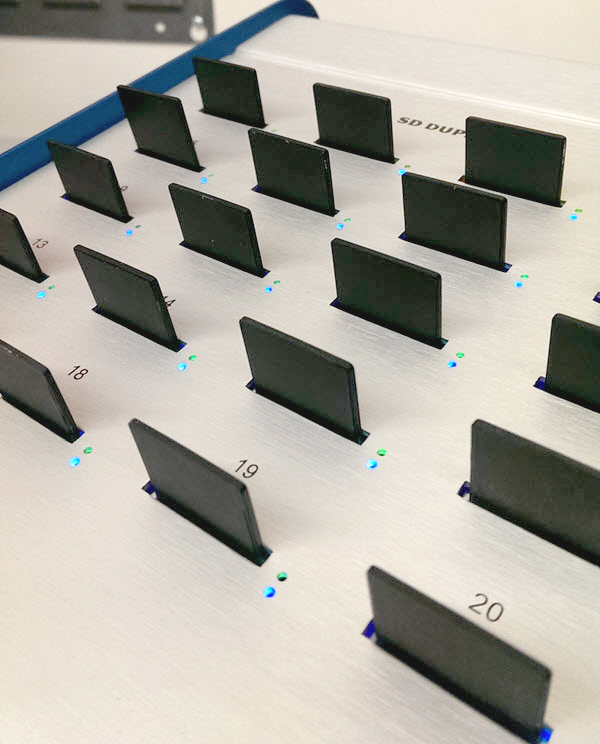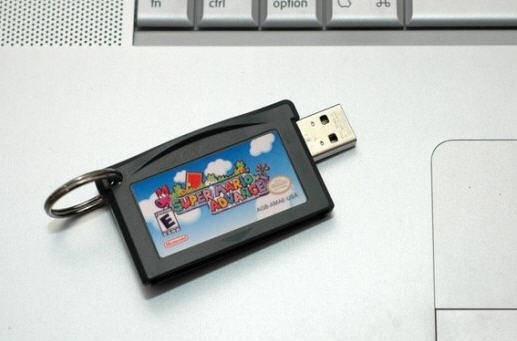
How To Read and Write CID on SD Cards
If you are looking to read the CID number of an SD card, or extract the CID off an SD card, then you will find this article very helpful. Some also call this “reading the PSN off the SD card” or reading the product serial number off the SD card.
UPDATE (Feb 16, 2023):
We learned the company which manufactures this product now offers the ability to write the CID value as well as write protect the Secure Digital media.
Most phones and much of the software on phones will lock into the CID number of an SD card. The CID number is a unique card identifier number that is unique to the card itself. The CID number is valuable because software developers and hardware developers can lock software to the unique number of the device, thus eliminating the ability to pass along licensed software.
Reading the CID number from an SD card is not an easy task. It requires specific access codes to the index table of the memory card, and unless you know how to use the SD chipset of your card reader, chances are you won’t get the number—or at least not the correct and accurate number.
What is the CID number of an SD card?
The CID register is 16 bytes long and contains a unique card identification number. It is programmed during card manufacturing and cannot be changed by SD Card hosts. The CID number is a compilation of information about the card, such as manufacturer, date manufactured, checksum total, GB size, and more. Below is a table outlining all the items which make up the SD CID number.

So with all this said, how do you read the CID number from an SD card? As we’ve mentioned, it isn’t easy and it’s hardware based. If you do enough searching on the internet, you’ll find some home-brew code to read the CID numbers, but that’s only if you have the SD card or microSD card connected via an IDE bus to your host computer. This isn’t easy for everyone. There is clear evidence that using a USB to SD card reader will not get you the information you require—or at least accurate and correct information. Meaning most times the CID number generated is actually the serial number of the card reader itself, not the CID number of a specific SD card.
In addition, what if you are required to read the CID number off SD media in bulk? A single, one-at-a-time solution is not practical.
In my search to read the CID number from SD media, I came across Nexcopy – a manufacturer of USB duplicator equipment and other flash memory equipment. Several models they carry are SD duplicators and microSD duplicators. With the secure digital duplicators, part of their feature set includes reading CID numbers from SD media. The equipment can read 20 cards at a time, 40 cards at a time, or 60 cards at a time, depending on the model. The duplicators will read the CID number and export it to a .csv file for import into other business functions. This configuration makes it quick and easy to obtain the CID number. Granted, the equipment is not designed for single-use operation, but rather reading the CID of SD media in bulk quantity. Here is a screenshot of Nexcopy’s software reading 20 CID numbers:

I didn’t contact Nexcopy Incorporated for pricing of the equipment, but doing a quick search for the equipment shows me a price of about $1k for the smallest 20 target system and $3k for the largest 60 target system.
With all this said, there is still no clear-cut method to read CID numbers off SD cards for the home-user, but maybe this article will at least explain why you haven’t found a good solution as of yet.
The CID (Card Identification) number is a unique identifier that is assigned to each Secure Digital (SD) card. The CID number is a 16-byte value that is used by the SD card host device to identify the SD card and to determine its capabilities.

 Of course, just being made with a meteorite seems like enough, but no, it also comes with a high-purity diamond embedded in it. The drive also incorporates African Black Wood, which is considered a rather high quality material.
As far as the actual thumb drive is concerned, it’s USB 3.0-compatible, and comes with 64GB of internal memory. It also has a lifetime warranty, so at least you know if anything goes wrong with your ultra-expensive drive, you will be able to get it replaced.
The device comes in two different flavors. Both have the diamond and meteorite, but the cheaper version also features silver and will set you back $1,130. The more expensive 18C gold model will set you back $1,990.
My buddy made the comment:Â
Continue Reading
Of course, just being made with a meteorite seems like enough, but no, it also comes with a high-purity diamond embedded in it. The drive also incorporates African Black Wood, which is considered a rather high quality material.
As far as the actual thumb drive is concerned, it’s USB 3.0-compatible, and comes with 64GB of internal memory. It also has a lifetime warranty, so at least you know if anything goes wrong with your ultra-expensive drive, you will be able to get it replaced.
The device comes in two different flavors. Both have the diamond and meteorite, but the cheaper version also features silver and will set you back $1,130. The more expensive 18C gold model will set you back $1,990.
My buddy made the comment:Â
Continue Reading

 The easiest and most convenient decision would be saving your files to the flash drive. Most everyone has a 16GB USB flashdrive these days, it fits in your hand and you can carry it around with out trouble. But will it last? Is a USB flashdrive where I should put my photos if my computer crashes and I need to restore my photos? Lets forget about the possibility you simply misplace the USB flashdrive. Is the device archive worthy?
The other option is the USB hard drive. Most people don’t have one so you’ll need to buy one. Although they are cheap, a USB hard drive is not as cheap as a 16GB or 32GB flash drive…and to be honest the 16-32GB sticks probably have enough space that it could hold your photos. So is it worth the extra time and money to archive to a USB hard drive? I guess this is the question more and more people are asking themselves. Well I have the definitive answer:
USB hard drive.
Flashdrives are great products for quickly moving files from one computer to another. However, they are not the best choice for archive purposes, and here are some reasons why:
The devices are small and will most likely get damaged. Unless of course you put the USB stick into the back of your desk drawer, a USB
The easiest and most convenient decision would be saving your files to the flash drive. Most everyone has a 16GB USB flashdrive these days, it fits in your hand and you can carry it around with out trouble. But will it last? Is a USB flashdrive where I should put my photos if my computer crashes and I need to restore my photos? Lets forget about the possibility you simply misplace the USB flashdrive. Is the device archive worthy?
The other option is the USB hard drive. Most people don’t have one so you’ll need to buy one. Although they are cheap, a USB hard drive is not as cheap as a 16GB or 32GB flash drive…and to be honest the 16-32GB sticks probably have enough space that it could hold your photos. So is it worth the extra time and money to archive to a USB hard drive? I guess this is the question more and more people are asking themselves. Well I have the definitive answer:
USB hard drive.
Flashdrives are great products for quickly moving files from one computer to another. However, they are not the best choice for archive purposes, and here are some reasons why:
The devices are small and will most likely get damaged. Unless of course you put the USB stick into the back of your desk drawer, a USB 




 Enter the USB 3.0 Sony Micro Vault
Enter the USB 3.0 Sony Micro Vault  Nothing official from either company in regards to specs or a simple introduction, nor does the high-capacity USB 3.0 stick appear on Display Taiwan’s trade show website. So adding this all up, it could be nothing more then a USB case and a trade show hottie giving out false information.
If you watch the video [
Nothing official from either company in regards to specs or a simple introduction, nor does the high-capacity USB 3.0 stick appear on Display Taiwan’s trade show website. So adding this all up, it could be nothing more then a USB case and a trade show hottie giving out false information.
If you watch the video [
 First off, if you are using something like the
First off, if you are using something like the  In short, you’re going to use the lanyard loop of the stick and some thread to stitch it a piece of Velcro which is then put into the wallet. This design allows the drive to be some-what permanent, yet you can pull it out completely when needed.
In short, you’re going to use the lanyard loop of the stick and some thread to stitch it a piece of Velcro which is then put into the wallet. This design allows the drive to be some-what permanent, yet you can pull it out completely when needed.
 Some live, eat and sleep SuperMario, or at least did when they where younger will enjoy this small USB flash drive cartridge:
Some live, eat and sleep SuperMario, or at least did when they where younger will enjoy this small USB flash drive cartridge:
 Or for the hard cord geek who needs a boat load of extra storage you can pull out all the stops for this 1TB hard drive,
Or for the hard cord geek who needs a boat load of extra storage you can pull out all the stops for this 1TB hard drive,




 In a day when typing “cougar” into Google yields more pornography then the animal you would expect, it’s almost a shock to hear about Playboy content being available on USB hard drive. Wouldn’t you think it had already been done?
It hasn’t, and that is why I’m here to tell you about the 250GB USB hard drive full of all Playboy magazine content. All of it – back from 1953 when the first issue was published.
The USB Hard drive from Playboy holds 650 magazines and over 100,000 pages of fascinating articles, photographs and interviews.
The hard drive works on any computer, just like you’d expect a
In a day when typing “cougar” into Google yields more pornography then the animal you would expect, it’s almost a shock to hear about Playboy content being available on USB hard drive. Wouldn’t you think it had already been done?
It hasn’t, and that is why I’m here to tell you about the 250GB USB hard drive full of all Playboy magazine content. All of it – back from 1953 when the first issue was published.
The USB Hard drive from Playboy holds 650 magazines and over 100,000 pages of fascinating articles, photographs and interviews.
The hard drive works on any computer, just like you’d expect a